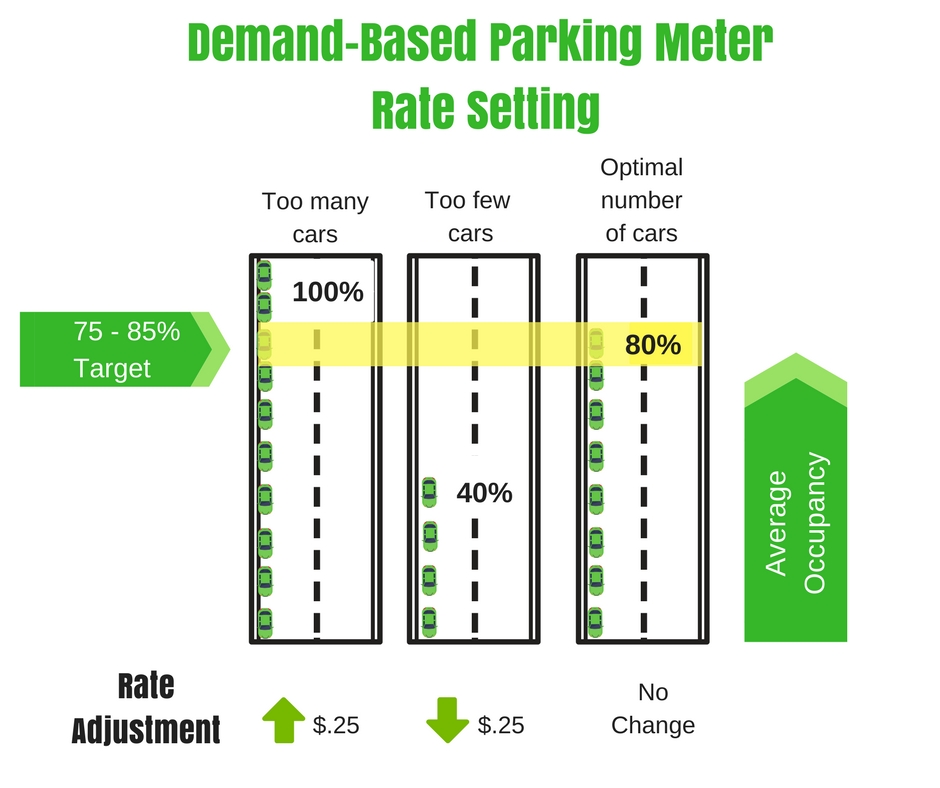

Beginning in the Summer of 2017, the Parking Authority of Baltimore City started using the demand for parking spaces to determine the hourly parking meter rate on blocks in Central Downtown. Using data collected every six months, the Parking Authority will adjust rates to help create one or two available parking spaces on each block, making it easier for parkers to find parking downtown and spend more time enjoying Baltimore.
To reach our goal of one or two available parking spaces per block (15-25% availability; or 75-85% occupancy), we must use the right rate - the lowest rate that will regularly produce one or two available parking spaces on each block face.
Data is collected and analyzed every six months to determine the average occupancy rate on each block. Meter rates are adjusted incrementally and slowly. Rates are adjusted up or down in $0.25 increments no more than once every six months.
